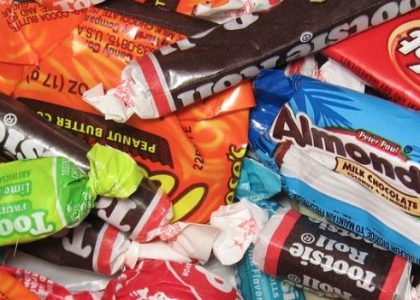The sugar market is currently displaying a number of characteristics that truly define what trading in the futures markets is all about both long and short-term as well as trend and countertrend strategies. Looking at the sugar futures market from a long-term trading perspective it is easy to see that short traders have been in control of the market since the last upward spike in prices last July. The sugar futures have steadily declined under the growing certainty of a large Brazilian harvest as well as declining demand in a slow global growth economy. These factors have combined to push sugar to its lowest traded prices since December of 2010.
All the telltale signs of a solid trend have accompanied the sell off in sugar. For example, open interest has skyrocketed from approximately 70k to more than 350k since the July 2012 high. There are two reasons that open interest swells as the market moves directionally. First of all, the market allows the people who are early to put on the correct position to stay in that position. I know this sounds simplistic but traders with profitable positions can rest easy and let the market do its own work. Secondly, the increase in open interest is attributable to more people climbing on the trend. Other than a minor spike last October, most anyone who has initiated a short position in the sugar futures market has been rewarded with profits quite readily. These two factors work hand in hand inviting more people to board the gravy train of easy trend riding profits.
The downward trend in sugar futures is well founded due to the expectations of a huge 2013 harvest that should be led by a record Brazilian harvest. This is news that everyone is aware of and this fundamental information has attracted good traders to the sell side of the market. Technical traders have also had an easy go of it since what rallies there have been have been capped nicely by the 90 day moving average. In fact, the last time the 30-day moving average crossed under the 90-day moving average was in August of last year. Finally, technical traders on the short side have collected profits due to the orderly decline of the market thus far rather than getting stopped out on any spikes in volatility.
This brings us to the current situation and our reasoning for looking for a buy signal in a downward trending market. First of all, the ballooning open interest happens to occur as the market has begun to stall. The market has traded between 16.69 and 19.25 since February 1st. This is a pretty tight range considering open interest has more than doubled since then. This means that there are more than 150k new short positions in the market over the last six weeks. Furthermore, none of these new short positions have had the chance to accrue much in the way of profits.
Technically speaking, these new short positions should be sweating. The sugar futures made a new low for the move last week, trading down to 17.56 and followed it up with a new low this week down to 17.55. Last week’s trading range was merely 22 points. The last time the market traded that tightly for an entire week was in September of 2010. Furthermore, this week’s new low, by one tick, has now been followed by a breach of last week’s high at 17.78. This creates an outside bar on a weekly basis. This is typically a good reversal signal for the next couple of weeks.
The new short positions will have protective stops placed relatively close to the market since risk should always be the number one consideration when determining a trade’s appropriateness. This week’s action clearly showed that the market has run out of people willing to create new short positions under 17.55. Markets always run to where the action is. The declining ranges combined with this week’s reversal bar lead me to believe that the next move is higher.
I expect the market to make some type of bottom here. However, it is always important not to sell a rocket or, buy a falling knife. We will enter the market through the use of a buy stop order. This means we will only buy the market if it can climb high enough to trigger our entry stop, which will be placed at 17.85. We expect this to begin triggering buy orders all the way up as traders take their profits or losses, accordingly. I expect the market could trade as high as the 90-day moving average at 18.74. More likely, it will stall out between the trend line dating back to July that now comes in at 18.47 and the 90-day moving average, now at 18.74. If our buy stops are filled, we will place a protective sell stop at 17.59, which should limit risk to just under $300 per contract.
Rarely do we find a contrarian play so clearly set up and with such a high risk to reward ratio. If we are right, the market will get us in on the long side just as 150k contracts are washed out on the short side thus creating a technical bottom in line with the seasonal tendency of the New York July sugar futures #11 contract.
This blog is published by Andy Waldock. Andy Waldock is a trader, analyst, broker and asset manager. Therefore, Andy Waldock may have positions for himself, his family, or, his clients in any market discussed. The blog is meant for educational purposes and to develop a dialogue among those with an interest in the commodity markets. The commodity markets employ a high degree of leverage and may not be suitable for all investors. There is substantial risk of loss in investing in futures.





